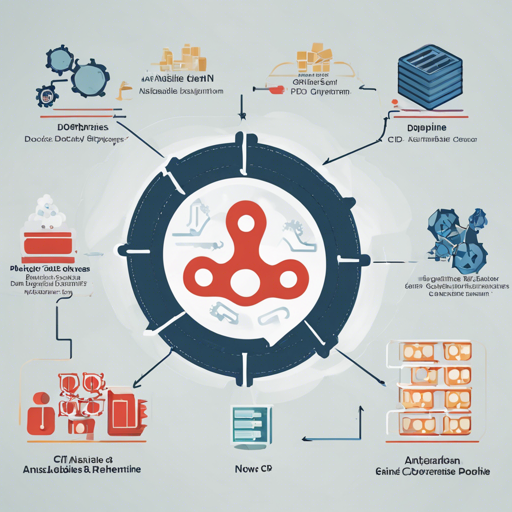Welcome to your step-by-step guide on creating a powerful DevOps CI/CD pipeline! In this article, we will walk you through the process of setting up a Continuous Integration and Continuous Deployment (CI/CD) pipeline using key technologies including Git, Jenkins, Maven, Ansible, Docker, and Kubernetes. This is your chance to streamline your development efforts and enhance your deployment frequency.
Understanding the Components
Before diving into the setup might be useful to understand the components of the pipeline. Think of each element as part of a well-oiled machine:
- Git: This is your version control system, like a librarian managing book editions, ensuring that you always have the latest version of your project and keeping track of changes.
- Jenkins: Jenkins acts as the conductor of your orchestra, automating the entire process of building, testing, and deploying your applications.
- Maven: Consider Maven your project’s own chef, configuring and managing your project dependencies just as a chef ensures all the ingredients for a meal are in place.
- Ansible: This is the logistics manager, orchestrating deployments and configurations easily across different systems.
- Docker: Think of Docker as the shipping containers for your application, allowing it to run consistently across different environments.
- Kubernetes: Finally, Kubernetes is the fleet manager, ensuring that all the shipping containers (applications) are deployed, monitored, and managed efficiently.
Setting Up Your Pipeline
Now that you understand the components, let’s break down the steps to set up your CI/CD pipeline.
- Step 1: Set Up Git
- Create a repository for your project on GitHub.
- Clone the repository to your local machine.
- Step 2: Install Jenkins
- Download Jenkins from its official site.
- Follow the installation instructions specific to your operating system.
- Step 3: Configure Jenkins with Maven
- Install the Maven plugin in Jenkins.
- Configure Maven settings within Jenkins.
- Step 4: Deploy Ansible
- Install Ansible on your server.
- Create playbooks that describe how to deploy your application.
- Step 5: Create Docker Images
- Write your Dockerfile to build your application image.
- Build and test the Docker image to ensure it works.
- Step 6: Orchestrate with Kubernetes
- Configure Kubernetes to orchestrate your Docker containers.
- Deploy your application using the Kubernetes deployment configs.
Troubleshooting Common Issues
Even the best-laid plans can encounter hiccups. Here are a few troubleshooting tips:
- If Jenkins fails to connect to Git, ensure that your Git repository URL is correct and your credentials are properly set up.
- If the Docker image fails to build, check your Dockerfile for syntax errors or missing dependencies.
- In case of deployment issues with Kubernetes, use the command
kubectl get podsto see the status of your pods and troubleshoot accordingly. - If you encounter Ansible not running correctly, verify the syntax of your playbooks using
ansible-playbook --syntax-check.
For more insights, updates, or to collaborate on AI development projects, stay connected with fxis.ai.
Conclusion
By following the steps outlined above, you will have successfully set up a CI/CD pipeline that utilizes Git, Jenkins, Maven, Ansible, Docker, and Kubernetes. This setup will expedite your development processes and increase the reliability of your deployments.
At fxis.ai, we believe that such advancements are crucial for the future of AI, as they enable more comprehensive and effective solutions. Our team is continually exploring new methodologies to push the envelope in artificial intelligence, ensuring that our clients benefit from the latest technological innovations.
Final Thoughts
Don’t shy away from experimenting with the configuration and orchestration of your CI/CD pipeline. The power of these tools is immense, and once you grasp their interdependencies, there’s no limit to what you can achieve!

